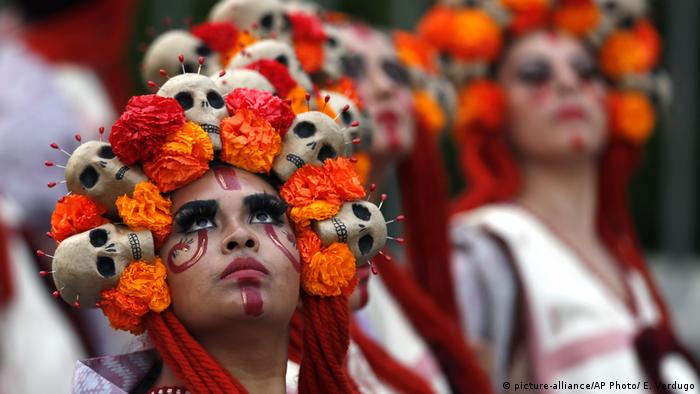Times, The New York. “Mexico’s Day of the Dead Parade Pays Tribute to Quake Victims.” The New York Times. October 29, 2017. Accessed October 30, 2017. (Link)
The Impact of the Earthquakes
The annual Day of the Dead Parade in Mexico City was initiated this past Saturday afternoon. However, the celebration carries a little bit of a different meaning this year because of the recent earthquakes that have devastated the country. The powerful 8.2 and 7.1-magnitude earthquakes killed approximately 700 people, destroyed buildings, and left the whole country in mourning. However, 300,000 people attended the parade this year (100,000 more people than last year) with over 700 people dressed in costumes parading along El Paseo de la Reforma, the 4 mile journey the participants march on. A common symbol throughout this year’s parade is a fist. Many paraders either walk with their fists in the air or wear shirts/costumes with similar significance. The fist is “a tribute to the rescuers who had made the gesture to demand silence as they listened for desperate survivors in the rubble of the second quake” (Times). The elaboration of the parade remains the same: faces are painted with intricate detail to resemble skulls and very festive costumes are worn. However, the emotion is rather different this year. One participant remarks that the parade may be a distraction or a way of escaping the tragedy that has so deeply affected the country.
Segment of the Parade
What does the Celebration Mean?
This article written by The New York Times briefly describes the history of the holiday. The Day of the Dead can be traced back to Mesomaerican festivals many years ago that believed that the dead returned temporarily to Earth. El Día de Los Muertos can be described to be a more positive way to look at death. Life is being celebrated, which I believe to be a much healthier outlook on a person’s passing. Flowers, food, music, color, and remembrance brings this festival to life. This year, in particular is an especially important time to celebrate life by coming together and remembering all those who lost their lives in the Mexican earthquakes. As one participant puts it, “We’re not only here to celebrate and dance, but also when there’s a disastrous situation we come together to help” (Times). A stronger element of human compassion comes into play with this year’s festival.

Costume Example: Elaborate Headpiece With Skulls and Face paint
The parade demonstrates that despite the grave events that have recently taken place in Mexico, the country has united to celebrate life in a very positive way. The Day of the Dead is a holiday that is mostly relevant to Mexico, so it can be said that it makes up a large part of Mexican identity. It is unique to Mexico and its impact on those of Mexican origin is even greater this time around. As opposed to the violence and drug trafficking that is commonly associated with Mexico in the media, readers can see a lighter side of Mexico in this article, one that is thoughtful, optimistic, and hopeful.
The tradition of The Day of The Dead has expanded to not only other Latin American countries, but to The United States as well, demonstrating that the holiday has had a global impact. In fact, I learned about the holiday when I was in my sixth grade Spanish class and was retaught it every year since that time. The event is undoubtedly one of great importance and more and more cultures every day are implementing it into their traditions. The holiday itself has encountered many different people, countries, and cultures over the years. So, this week…



